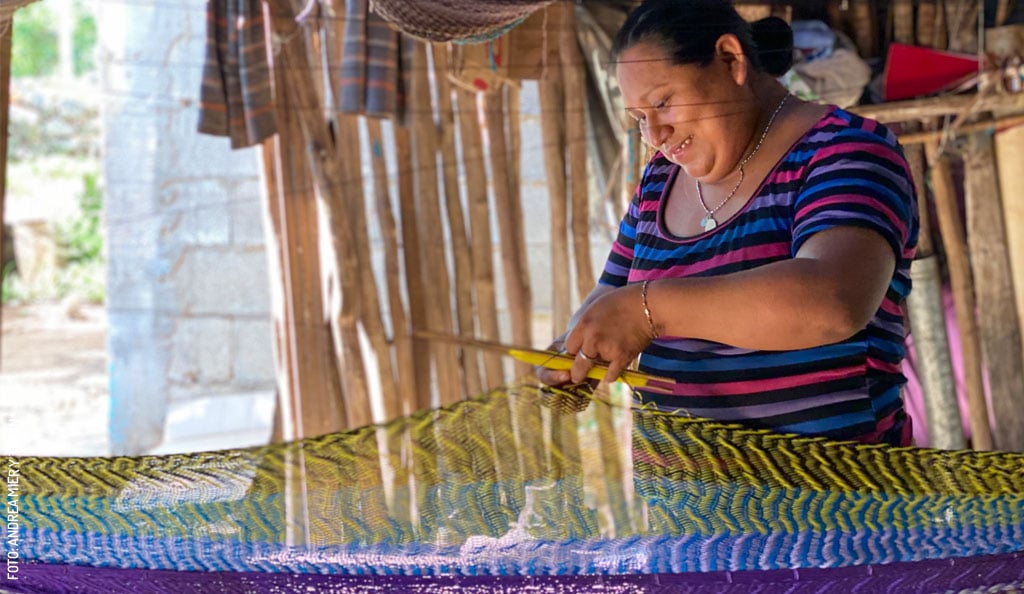
Hammocks: a legacy woven by hand
With Thread and a Wooden Needle, Yucatecan Heritage is Woven on a Loom
Yucatecos grow up surrounded by woven patterns; they take siestas in the afternoon and even dream among nylon or cotton threads. If there's one thing no Yucatecan home can be without, it's a hammock. Sometimes no one even knows how it got there: maybe it was bought from a local artisan, or perhaps it was made by a grandmother, mother, or aunt.
But have you ever wondered what goes into making one?
Hammocks: a legacy woven by hand
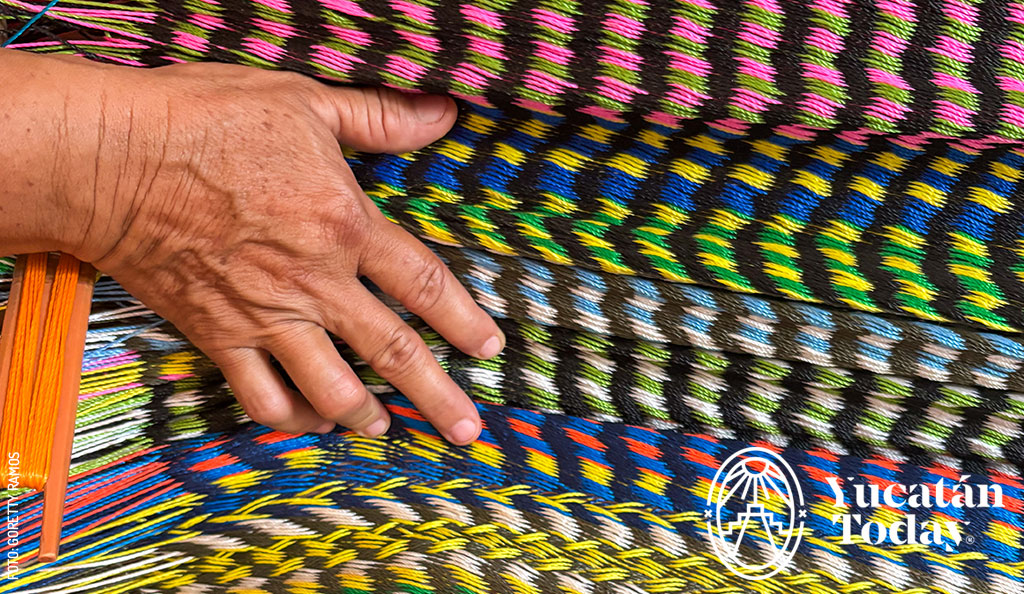 I remember spending vacations at the beach and seeing my grandmother bringing along her loom. While we played, she would be weaving a hammock. This has been the experience for many Yucatecos—many of whom learned to weave at home, watching their mothers, aunts, or grandmothers. Some learned by intuition, just by observing; others were taught from a young age to carry on the craft. And then there are those who, like Doña Guadalupe Tzab, learned on their own, driven by curiosity at the age of 14.
I remember spending vacations at the beach and seeing my grandmother bringing along her loom. While we played, she would be weaving a hammock. This has been the experience for many Yucatecos—many of whom learned to weave at home, watching their mothers, aunts, or grandmothers. Some learned by intuition, just by observing; others were taught from a young age to carry on the craft. And then there are those who, like Doña Guadalupe Tzab, learned on their own, driven by curiosity at the age of 14.
Though it’s no longer common to see a loom at home, many of us remember someone who knew how to weave hammocks and had everything they needed to make them. These kinds of knowledge are often inherited without us realizing it.
From the loom to the “S”
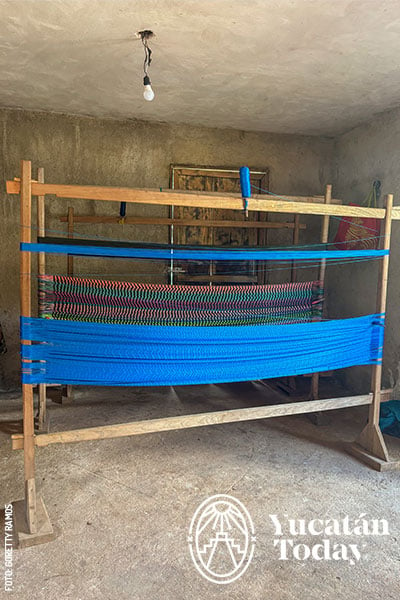
Making a hammock is a weeks-long task: it can take anywhere from 7 to 15 days, depending on the size, design, and the experience of the person weaving it.
First, colors and design are chosen, along with the technique and even the thickness of the thread, all before the weaving process even begins.
To start, the thread is placed into a special needle that looks like a tiny boat. Originally made of wood, today they’re also made of plastic or metal. Different sizes are used depending on the task. Smaller needles are for repairs, while larger ones, used for the main body of the hammock, can hold more thread and allow faster progress.
Both nylon and cotton threads are used: the former is more durable and colorful, while the latter is softer and more comfortable.
The next step is to begin weaving the hammock, that is, interlacing the threads to create a pattern. This artisanal technique relies on a key tool to form the body of the hammock: the loom. The loom for hammocks is a wooden frame made up of four slats, forming a rectangle. The standard size is about 2.20 - 2.30 m (7.2 - 7.5 ft) wide by 1.70 m (5.5 ft) high.
Once the loom is set up, the first thread is placed. It wraps around one of the side slats, and on the opposite end, a knot is made, and the interlacing begins. Each color uses a separate needle, and as the weaving progresses, the colors are alternated. For Doña Guadalupe, this is the part she enjoys most, mixing threads to form figures and patterns.
The body of the hammock is woven from bottom to top, side to side. Once it’s finished, the edges on both sides are completed. Afterward, the “arms” of the hammock are made using a different loom, very similar to the main one, where the desired length is woven.
Once that’s done, the final touch is the arillo. Also known as the muñeca, or wrist, it’s the final knot that allows the hammock to be hung. It requires about 39 ft of thread and is made using a macramé technique. These threads are looped beneath the arm of the hammock and are slowly woven together; knot by knot, each tightened firmly to prevent unraveling.
Thread by thread, a hammock is made
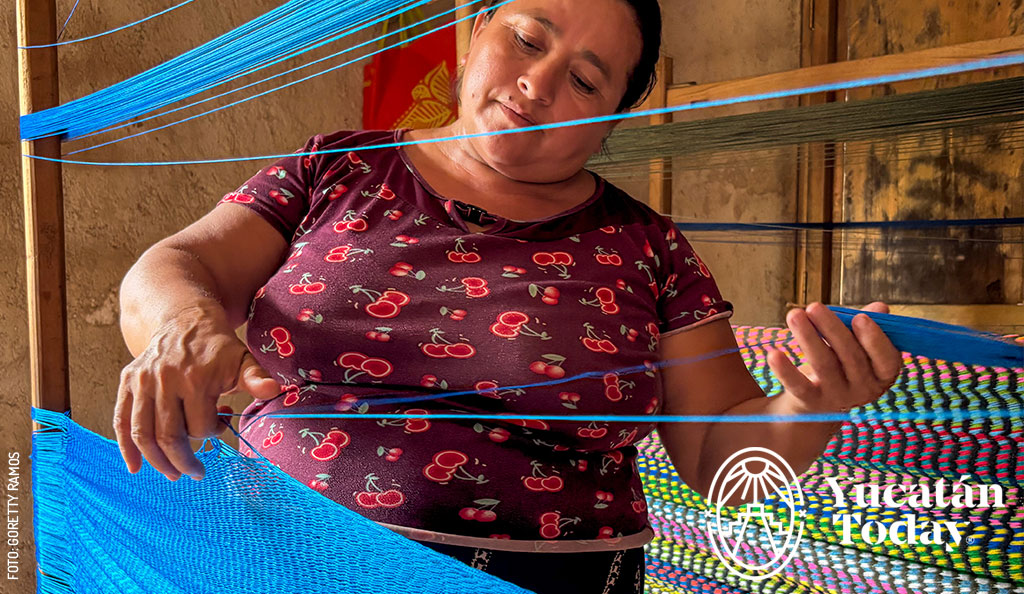
Each day, artisans spend about five hours standing while weaving, slowly progressing until they complete an entire hammock—body, edges, arms, and loops—over an average of two weeks. If they make a mistake during the weaving process, they must undo the work and start over.
Many Yucatecan women weave hammocks from home, often as a complementary activity to housework or as part of their family’s income. In fact, there are entire communities dedicated to this craft, such as Tixkokob, a town well known for its hammock production.
Weaving hammocks is much more than just intertwining threads: it is labor-intensive, creative work that requires skill and patience. It’s undoubtedly a legacy of Yucatecan culture. And what better way to enjoy this art than by lying in a hammock, gently swaying to escape a hot afternoon.
Special thanks to Doña Guadalupe Tzab of Hamacas Virgen María (Calle 8 S/N x 15 y 17, Tiholop) for her support in preparing this article. To order a hammock, contact her at Cel. 997 110 4233
First published in Yucatán Today print and digital magazine no. 451, in July 2025.
Want to buy a hammock but don’t know where to start?. Here’s how to choose your hammock like a true Yucateco
Already have your hammock? Discover the daily ritual of hanging and taking it down

Author: Goretty Ramos
Feminist communicator with delusions of an artist and screen printer. Research, learn and share.
In love with Yucatán? Get the best of Yucatán Today in your email.
Don't miss our best articles and the monthly digital edition before anyone else.
Related articles
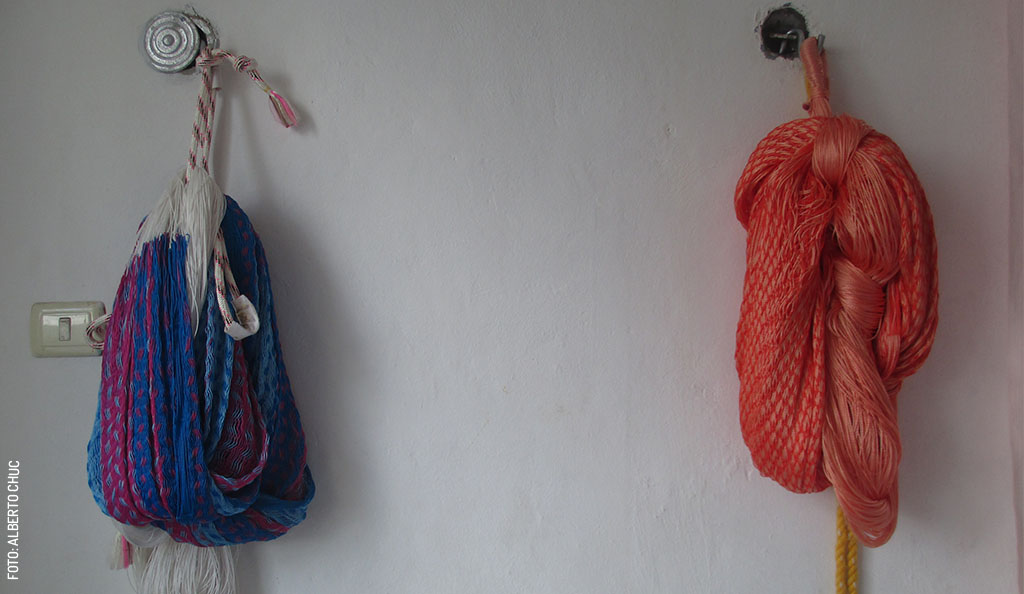
The Art of Hanging Up a Hammock
Explore the art and tradition of hanging up a hammock in Yucatán, a skill passed down through generations. Discover the cultural significance of...
Ode to Sleeping in a Hammock
Learn the art of sleeping in a hammock in Yucatán. Get the key tips for a restful night's sleep in this ode to relaxation, step by step.




